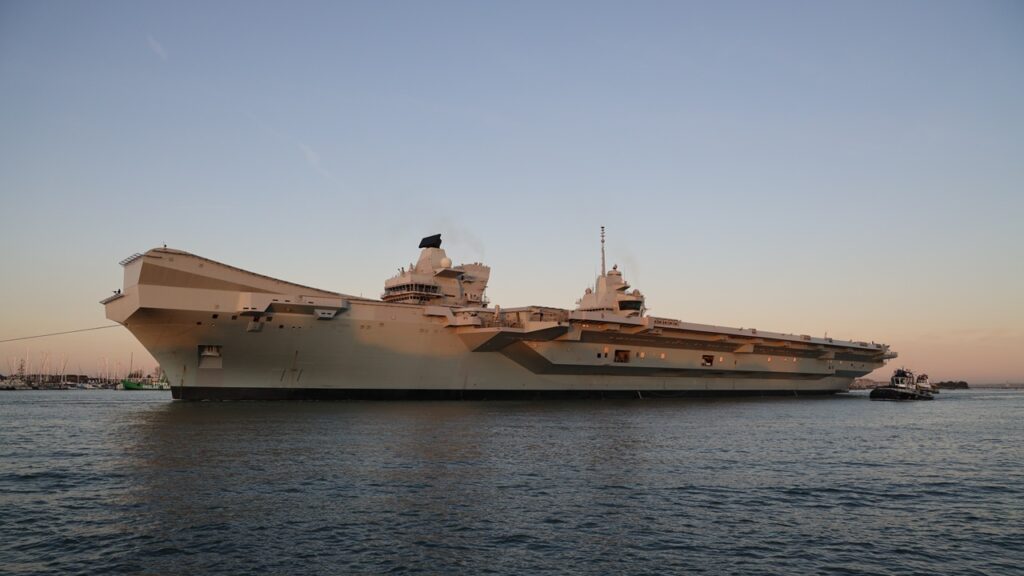
A British F-35B fighter jet, which had been grounded in India for over a month due to a hydraulic failure, has successfully rejoined the HMS Prince of Wales after completing repairs. The aircraft departed from Thiruvananthapuram International Airport on July 28, 2025, and returned to the Royal Navy’s flagship, raising questions about the UK’s defense readiness during its ongoing deployment in the Indo-Pacific region.
The F-35B, identified by tail number ZM168, was originally part of the carrier strike group engaged in Operation Highmast. The incident began on June 14, 2025, when the aircraft was participating in joint operations with the Indian Air Force. Following a hydraulic malfunction, the jet was diverted and subsequently grounded at the Indian airport. Initial attempts to repair the aircraft were unsuccessful, prompting the deployment of a specialized engineering team from the UK and the United States, which arrived on July 7.
During its stay at Thiruvananthapuram, the F-35B was kept secure, first in a remote parking area and later in a hangar where repairs were completed by July 22. According to UK-based Navy Lookout, there was “no particular urgency” to return the fighter to the carrier, as it was well-guarded by both British and Indian personnel. Nevertheless, the protracted downtime has been criticized as detrimental to the perception of UK defense capabilities.
The decision to return the F-35B to HMS Prince of Wales is believed to be influenced by logistical considerations, as it positioned the aircraft approximately halfway between the UK and northern Australia. This strategic location allowed the Ministry of Defence to demonstrate its capability to ensure the aircraft could complete a direct flight to Darwin, Australia. The return flight was supported by an RAF Voyager tanker that provided in-flight refueling.
In the aftermath of the F-35B’s grounding, the Royal United Services Institute characterized the incident as a “PR disaster.” This situation has potential implications for public trust in the British military and its equipment. The incident drew attention on social media, with humorous memes circulating, including one from the Kerala tourist board that joked about the fighter’s reluctance to leave the region.
The F-35B’s return to HMS Prince of Wales coincided with the ongoing Talisman Sabre 2025 multinational exercises. During these exercises, the carrier has hosted Lightning IIs from the US Marine Fighter Attack Squadron 242 (VMFA-242), which has been conducting various operations alongside the British squadrons. The current complement includes F-35s from the Royal Air Force’s 617 Squadron, known as the “Dambusters,” and Naval Air Squadron 809, referred to as the “Immortals.”
As VMFA-242 operates from the UK’s warships, the extent of their deployment remains uncertain. The squadron is part of the 31st Marine Expeditionary Unit (MEU), which also includes several amphibious assault ships and landing vessels, enhancing the operational capabilities of the coalition forces in the region.
The return of the F-35B to HMS Prince of Wales marks a significant moment in the UK’s military operations, albeit underscored by the challenges experienced during its time in India. The situation emphasizes the importance of rapid response and repair capabilities for modern military assets deployed far from home.







